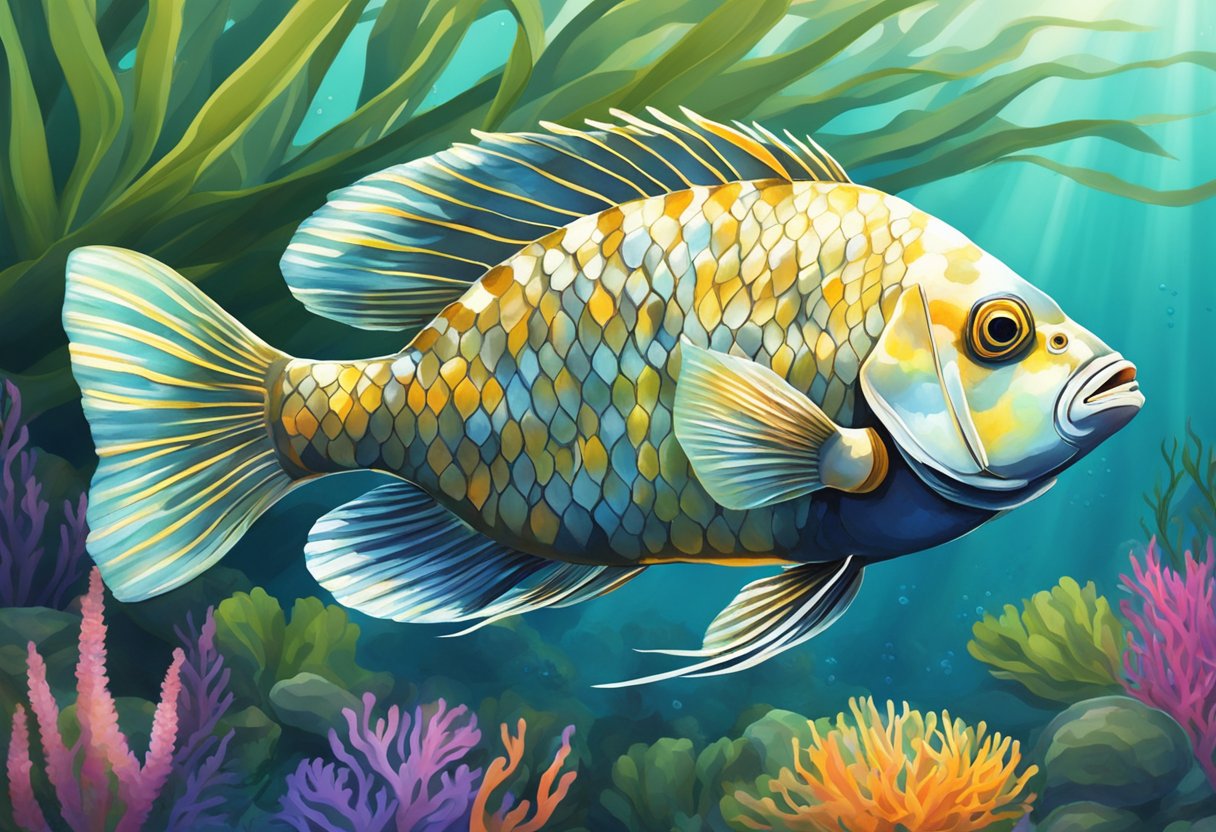Tilapia fish is a type of freshwater fish that is widely consumed across the world. It is a popular choice for people who are looking for a low-fat, high-protein food source. Tilapia is also a good source of nutrients such as vitamins and minerals.

Tilapia farming and aquaculture have become increasingly popular in recent years due to the high demand for this fish. Tilapia is farmed in many countries, with China being the largest producer. The farming of tilapia has helped to make this fish more widely available and affordable.
If you're looking for a healthy and nutritious food source, then tilapia fish is a great option. It is low in calories and fat, while being high in protein and nutrients. Whether you're cooking it at home or ordering it at a restaurant, tilapia is a delicious and healthy choice.
Key Takeaways
- Tilapia fish is a low-fat, high-protein food source that is widely consumed across the world.
- Tilapia farming and aquaculture have made this fish more widely available and affordable.
- Tilapia is a healthy and nutritious food option that is low in calories and fat, while being high in protein and nutrients.
Tilapia Farming and Aquaculture

If you are interested in tilapia farming, there are several things you need to know about the global production and key regions. Tilapia is farmed in over 135 countries, with the largest producers being China, Africa, the United States, Ecuador, and Peru. The most common breed of tilapia farmed around the world is the Nile tilapia, which accounts for roughly 75% of farmed tilapia.
Global Production and Key Regions
China is the largest producer of tilapia, accounting for more than 50% of global production. Africa is the second-largest producer, with Egypt, Nigeria, and Uganda being the leading producers. The United States, Ecuador, and Peru are also significant producers of tilapia.
Farming Practices and Environmental Impact
Tilapia farming is generally considered sustainable, as tilapia are hardy and can tolerate a variety of aquaculture environments. However, like any form of aquaculture, tilapia farming can have an impact on the environment if not done sustainably. Overcrowding and poor water quality can lead to pollution, and the use of antibiotics and other chemicals can have negative effects on the ecosystem.
Breeding and Growth
Tilapia are fast-growing fish, with most species reaching maturity within a year. Fingerlings are typically raised in hatcheries before being transferred to grow-out ponds or tanks. Nile tilapia and blue tilapia are the most commonly farmed species, but there are over 100 species of tilapia in the Oreochromis genus.
Nutrition and Health Benefits
Tilapia is a low-fat, high-protein fish that is rich in nutrients such as phosphorus, selenium, and potassium. It is also a good source of omega-3 fatty acids, vitamin D, and vitamin B12. Tilapia has been linked to several health benefits, including improved heart health and lower blood pressure.
Culinary Uses and Preparation
Tilapia has a mild flavor and a firm, white flesh that makes it a versatile ingredient in many recipes. It can be baked, grilled, or fried and is often served with a variety of sauces and seasonings. Tilapia is a popular ingredient in many cuisines, including African, Latin American, and Asian.
Market and Consumption Trends
Tilapia is one of the most commonly farmed freshwater fish and is widely available in supermarkets and restaurants. It is an inexpensive and affordable source of protein, making it a popular choice for consumers. However, there have been concerns about contamination and the presence of mercury in farmed tilapia.
Challenges and Considerations
Tilapia farming faces several challenges, including the need to maintain sustainable farming practices and address environmental concerns. There is also a need to ensure that tilapia is produced in a way that is safe for consumers and does not pose a risk to public health. The use of antibiotics and other chemicals in tilapia farming is a concern, and efforts are being made to reduce their use and promote sustainable practices.
Frequently Asked Questions

What's a simple way to cook tilapia?
Tilapia is a versatile fish that can be cooked in many ways. A simple way to cook tilapia is by baking it in the oven. Preheat the oven to 200°C, season the fish with salt and pepper, and drizzle some olive oil over it. Bake for 15-20 minutes until the fish is cooked through and flakes easily with a fork. You can also grill, fry, or poach tilapia depending on your preference.
How much does tilapia typically cost?
Tilapia is an affordable fish that can be found in most supermarkets and fish markets. The price of tilapia varies depending on the location and the season, but it usually costs around £5-£10 per kilogram.
What are the health benefits of eating tilapia?
Tilapia is a low-fat, high-protein fish that is rich in vitamins and minerals. It is a good source of omega-3 fatty acids, which are essential for heart health and brain function. Tilapia is also low in calories and carbohydrates, making it a great choice for people who are trying to lose weight or manage their blood sugar levels.
Can you find tilapia for sale easily?
Yes, tilapia is a popular fish that is widely available in supermarkets, fish markets, and online stores. You can find fresh or frozen tilapia fillets, whole fish, or pre-packaged tilapia dishes in most grocery stores.
How does tilapia compare to salmon in terms of healthiness?
Tilapia and salmon are both healthy fish that are rich in protein and omega-3 fatty acids. However, salmon is higher in omega-3s than tilapia and has a richer flavour. Tilapia is a more affordable and versatile fish that can be cooked in many ways, while salmon is usually more expensive and has a stronger taste.
Where are tilapia fish originally from?
Tilapia fish are native to Africa and the Middle East, but they have been introduced to many other parts of the world for aquaculture and food production. Today, tilapia is farmed in many countries, including China, Indonesia, Thailand, and the United States.

